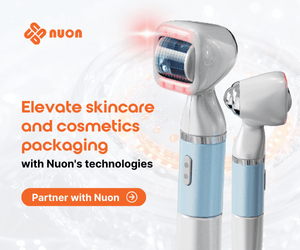Cosmetics Business asks: What is in silico testing and how can this modern approach save you money
Over to the expert…

Due to the numerous bans on animal testing for assessing the safety of cosmetic ingredients and products, alternative methods to replace them are required. Indeed, in many major markets new innovative cosmetic ingredients and products can only be assessed for safety with such approaches.
These alternative methods are mostly conducted in vitro (tests performed in a controlled environment outside of a living organism) or in silico (performed on a computer or via computer simulation). The use of in silico methods is particularly interesting because of the potentially low ‘testing’ costs and the fact that no samples are needed; substances need only be present in a digital format.
The long history of safety testing with animals led to a wealth of data, particularly in the pharmaceutical, cosmetic and food industries. There is even a respectable amount of data publicly available, for example at the European Chemicals Agency’s webpage.
This data can be used to identify chemically very similar compounds with relevant testing information. Extrapolating from this type of data to predict pharmacological/toxicological effects of new (and hence untested) substances is called Read-Across.
It must be noted that this approach is not always as simple as it may sound. However, this method is probably the most widely used in silico method for the assessment of cosmetic ingredients.
Other in silico approaches include Quantitative Structure Activity Relationship (QSAR) models, which are typically based on large chemical and toxicological datasets. Here mathematical relationships between chemical properties on the one side and pharmacological/toxicological effects on the other side are extracted and used to ‘train’ a QSAR model.
From simple linear regression to artificial intelligence building neuronal networks, there are many mathematical methods to train a QSAR model. These models, after robust validation, can be used to predict the potential pharmacological/toxicological effects of novel compounds.
The use of in silico methods is interesting because of the potentially low ‘testing’ costs and the fact that no samples are needed
Next to mathematical models, there are also hand-coded expert systems, which are, for example, based on ‘structural alerts’, ie the identification of chemical substructures associated with toxicity.
There are companies selling QSAR and related software, but there are also some institutions offering freeware. However, all demand experience and expertise to use appropriately. For this reason, in silico testing is not a magic wand and it is easy for inexperienced users to come up with inappropriate results.
Nevertheless, it is a striving science and technology giving us new insights about structure-activity relationships and supporting the assessment of substances with insufficient testing data.
In pharmaceutical research, in silico methods are used intensively for screening the safety of potential drugs during early stages of development. Besides QSAR models and related methods, there are many methods which are based on three-dimensional structures of molecules and target proteins and their molecular interactions.
Some of these approaches can be computationally expensive, and they demand a good understanding of molecular mechanisms and biological pathways (which are not always well understood in relation to toxicity).

A ‘test’ without the ‘tube’: in silico methods, plus an intensive literature review can be used to assess the safety of new substances
Nevertheless, it is likely that more and more approaches from pharmaceutical research will enrich the in silico tools currently used in other disciplines (eg toxicology and safety).
On the one hand these are relevant for safety assessments, but on the other hand this also becomes more and more relevant for cosmetic research, for example when novel compounds (eg fragrances) are developed.
At Delphic HSE, we use a Weight of Evidence (WoE) approach, where novel compounds are investigated by an intensive literature review, followed by the use of multiple in silico methods. Restricting yourself to the results of one Read-Across or one QSAR prediction leads to a higher risk of incorrectly assessing the safety of a substance.
When using different/complementary methods, predictions can be more reliable, or if not, uncertainty can be expressed. As the name implies, the WoE approach is gathering evidence; however, a lack of such evidence needs to be addressed as well.
When compiling safety assessments, there are usually Margins of Safety (MoS) applied per substance, formulation and exposure. In cases of uncertainty, the MoS can therefore be extended by a further in silico factor expressing the uncertainty.


